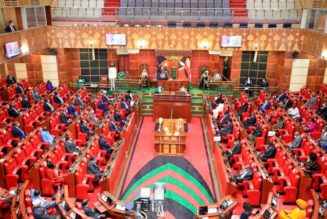
In 2022, Beth Mwangi was taken aback upon learning that her boss had been terminated while still on leave. This sudden shift in management transpired at the communications organisation where she was employed, leaving her and her colleagues bewildered.
Expressing her astonishment in the company’s WhatsApp group, Beth noted the absence of a farewell gesture for her boss, unlike previous departures where farewell parties were customary.
“While it seemed not to be due to egregious errors, I couldn’t help but wonder why someone with a substantial tenure wasn’t given a more dignified send-off,” she reflects.
Farewells for departing colleagues, as Robert Sakayo, a Human Resource Assistant, explains, hinge on various factors.
“The reason for departure is paramount, alongside the employee’s department, tenure, and whether they worked primarily in-office or in a hybrid capacity.”
How to do it professionally
Handling such transitions professionally is crucial. Acknowledging the departing employee’s contributions to the organisation or department is fundamental.
“A thoughtful gesture, like a gift card or sponsoring a relevant course, not only leaves a lasting impression but also maintains the connection,” suggests Robert.
Hosting a farewell gathering is another option, albeit contingent on the relationship with the departing colleague. However, professionalism should always be upheld.
“While family members need not attend, focus on highlighting their positive impact, with the supervisor or manager delivering remarks,” advises Robert.
Common blunders
Avoiding common blunders is imperative, notes Martha Kageha, a Human Resource Manager at Sinosoft. Negative comments or prying into departure details are discouraged.
She notes, “Now is not the time to tell them that you can survive without them. Do not pinpoint or expose their weaknesses.”
“Maintain professionalism; refrain from criticising productivity or probing into future plans unless shared voluntarily,” she advises.
Privacy concerns
Furthermore, organisations should prioritise employee privacy. Publicising departures in newspapers or social media can infringe on personal boundaries.
“Use language that uplifts and respects the departing employee, avoiding remarks that could undermine their value or contribution,” adds Martha.
For remote employees, similar procedures apply, albeit in a virtual setting. Crafting a heartfelt message expressing gratitude for their contributions while leaving the door open for future opportunities can provide closure.
Assessing the impact
In the aftermath of a departure, organisational leaders must assess the impact and address any operational gaps.
“Identify areas affected by the departure and bridge them temporarily until a replacement is secured,” emphasises Robert.
By navigating departures with professionalism and empathy, organisations can maintain morale and continuity amidst change.









